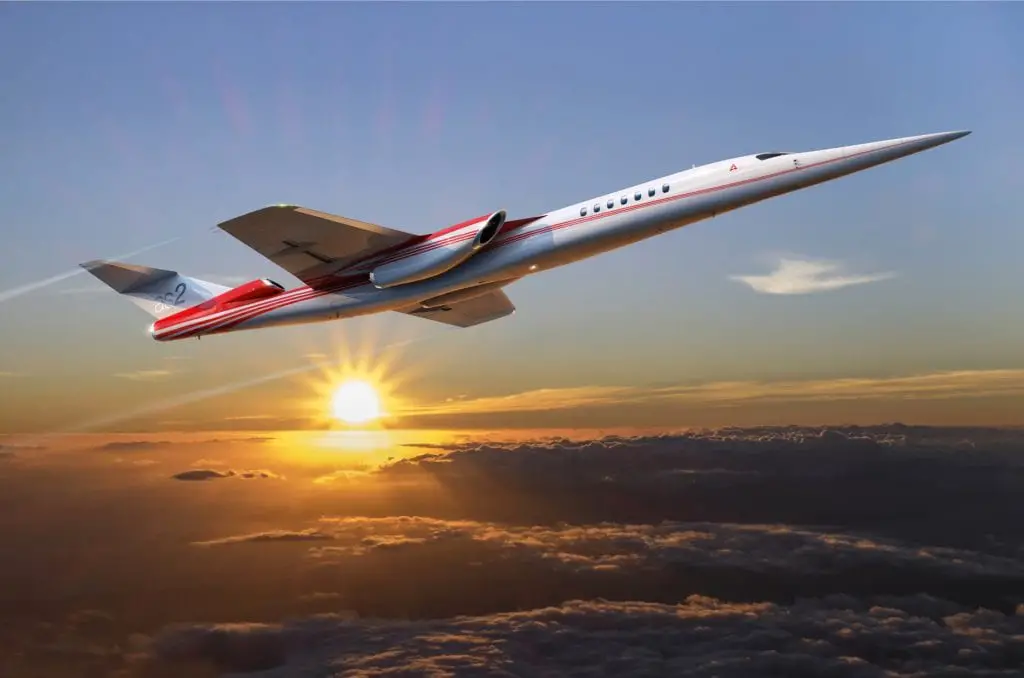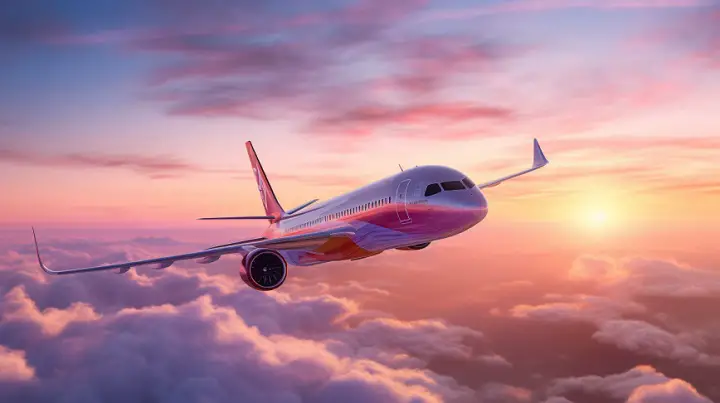
Why We Still Don’t Have Another Supersonic Commercial Jet Since Concorde?
In the golden age of aviation, a sleek, delta-winged aircraft shattered the sound barrier and forever changed the way we perceived air travel. The Concorde, the world’s first and only supersonic commercial jet, inaugurated an era of speed and glamour, an era in which the concept of time and space was dramatically compressed. But since its final flight in 2003, no other commercial aircraft has touched the iconic Mach 2 speed, bringing about an enigma that echoes in the halls of aerospace innovation: why has the supersonic dream not been realized again?
Welcome aboard our journey into the realm of the supersonic dream. This article delves into the technical, economic, and environmental challenges that have grounded the potential successors of Concorde and explore the futuristic advancements that may yet revive this unfulfilled ambition.
Prepare to buckle up for a ride that will take you through the sonic boom of history, the turbulence of the present, and the possibilities of a supersonic future.
The Concorde: A Technological Marvel Ahead of Its Time.
Concorde was the embodiment of innovation and luxury in aviation. With a cruising speed of Mach 2, this aircraft was the fastest and most elegant commercial jet that ever existed. The Concorde was a symbol of prestige and technological advancement, but unfortunately, it’s been almost two decades since it last flew.
The End of An Era: Why Did the Concorde Retire?
The answer is simple: safety concerns and profit loss. After the tragic accident that occurred in 2000 where all passengers died in a plane crash, public confidence faded, leading to reduced demand for supersonic travel which resulted in financial losses for operators. Despite subsequent safety upgrades, the cost to maintain these planes outweighed revenue from passenger tickets.
Why Haven’t We Seen Another Supersonic Commercial Jet Since Concorde?
Well, there are several reasons for this, including technical challenges, economic hurdles, and environmental concerns.
The Technical Challenges
Sonic Boom: A Major Obstacle to Overcome
One of the biggest technical challenges in developing a supersonic commercial jet is overcoming the sonic boom. The loud noise generated by the shockwaves created when an aircraft breaks the sound barrier can be heard for miles and has been a major concern for regulators and communities alike.
While some companies have proposed designs that minimize the sonic boom, there is still a long way to go in developing technology that can effectively mitigate its impact.
Fuel Efficiency: Balancing Speed and Sustainability
Another technical challenge facing the development of a new supersonic commercial jet is achieving fuel efficiency while maintaining speed. The Concorde was notorious for being fuel inefficient, consuming up to twice as much fuel as a conventional subsonic aircraft on a per-passenger basis.
This not only made it expensive to operate but also contributed significantly to its environmental impact. Any new supersonic commercial jet must find ways to balance speed with sustainability or face significant opposition from regulators and environmental groups.
Structural Integrity: Dealing with Extreme Heat and Pressure
The extreme heat generated by flying at supersonic speeds creates significant structural challenges for any commercial jet design. The Concorde had to be constructed from materials such as titanium, stainless steel, and aluminum alloys in order to withstand the heat generated during flight.
Additionally, high-pressure shockwaves created by flying at supersonic speeds can cause damage over time, requiring costly maintenance and repair work. Any new supersonic commercial jet design must overcome these challenges in order to be viable for long-term use.
Economic Hurdles
High Development Costs: Who Will Foot the Bill?
Let’s face it, developing a supersonic commercial jet is no small feat. It requires a tremendous investment in research and development, not to mention the construction and testing of prototypes. And who’s going to pay for all of this?
The airline industry opts for efficiency and cost savings, and they are seemingly occupied with operating and optimizing their current fleet of relatively modern and fuel-efficient (subsonic) aircraft. Governments may be hesitant to invest in something as risky and expensive as supersonic travel when more pressing issues are at hand.
But here’s the thing; investing in innovation is what drives progress. The development of the Concorde was a massive undertaking that required funding from both the British and French governments.
And while it ultimately didn’t turn out to be profitable for its operators, it was a technological achievement that pushed the boundaries of what was possible in aviation. If we want to see another supersonic commercial jet take flight, we need visionary leaders who understand the value of investing in big ideas.
Limited Market Demand: Is There a Need For Supersonic Travel?
Another economic hurdle that has hindered progress in supersonic travel is limited market demand. After all, how many people are really willing to pay top dollar for a few hours shaved off their travel time? The Concorde operated at a loss for most of its existence, with seats priced well out of reach for most travelers.
But just because demand may be limited doesn’t mean we should give up on supersonic travel altogether. I believe plenty of wealthy individuals, including private jet owners and first or business-class travelers, would still pay a premium for speed and luxury.
In fact, several companies are already working on developing private supersonic jets aimed at this very market. And beyond that, there’s also something to be said for pushing boundaries and exploring new possibilities.
The Wright brothers’ first airplane flight only lasted 12 seconds, but it opened up a whole new world of travel and exploration. Who’s to say what the future holds for supersonic travel and what benefits it could bring beyond just saving time?
Regulatory Roadblocks
Then there are regulatory roadblocks that come with developing any new technology. Governments worldwide have strict safety and environmental regulations that must be met before a new aircraft can take flight.
And when it comes to supersonic travel, there are additional concerns about noise pollution and sonic booms. But while these regulations may be necessary, they can also be a significant barrier to innovation.
The Concorde faced years of regulatory hurdles before it was finally allowed to take passengers across the Atlantic. And even then, its routes were limited by noise restrictions that prevented it from flying over land in many areas.
We need governments that are willing to work with innovators to find solutions that balance safety and sustainability with progress. It won’t be easy, but if we can overcome these economic hurdles and regulatory roadblocks, we may just see another supersonic commercial jet take flight in the next few years.
Environmental Concerns
Noise Pollution: Can We Mitigate the Impact on Communities?
As mentioned earlier, one of the most significant environmental concerns associated with supersonic travel is noise pollution. Sonic booms caused by aircraft traveling faster than the speed of sound can be heard for miles around and have a particularly detrimental impact on nearby communities.
While some may argue that this is a small price to pay for faster travel, it’s important to consider the potential negative impacts on quality of life and property values. The good news is that there are ways to mitigate this impact.
For example, NASA is currently working on developing a low-boom flight demonstrator, X-59 that could reduce sonic boom noise levels by a significant amount. X-59’s 75 decibels will fell like a soft thud in comparison to Concorde’s 105 decibels. Additionally, strict regulations could be put in place to limit supersonic flight over populated areas or during sensitive times such as late at night.
Carbon Emissions: Addressing the Environmental Impact of Supersonic Flight
Another significant environmental concern associated with supersonic travel is carbon emissions. Supersonic jets tend to consume significantly more fuel than subsonic aircraft, meaning they also emit higher levels of greenhouse gases into the atmosphere. This has led many critics to question whether such a high level of carbon output can be justified for the sake of faster travel.
However, as technology continues to advance and new propulsion systems are developed, it’s possible that we’ll see more sustainable options for supersonic flight in the future. For example, some companies are exploring hybrid-electric propulsion systems or even using biofuels derived from sustainable sources.
Sustainability Standards: Meeting Global Expectations for Sustainable Aviation
Regarding sustainability standards in aviation, there is increasing pressure from governments and consumers for airlines and aircraft manufacturers alike to meet higher environmental standards. With global awareness growing around issues like climate change and air pollution, it’s clear that the aviation industry needs to prioritize sustainability to remain viable in the long term.
This is particularly important when it comes to supersonic travel, given the higher levels of fuel consumption and emissions associated with such flights. As such, any company looking to develop a new supersonic commercial jet will need to demonstrate a strong commitment to sustainability and be able to meet or exceed global expectations for eco-friendly aviation.
Final Thoughts
Looking Ahead: What Does the Future Hold for Supersonic Flights?
Despite recent technological advancements, there are still major obstacles to overcome before we see another commercial supersonic jet take flight. While some companies like Boom Supersonic are investing heavily in research and development, it may still take years before supersonic travel becomes a viable option again.
Prospects for Success: Who Will Be the First to Launch a New Supersonic Commercial Jet?
There are several contenders in the race to develop a new supersonic commercial jet, but it remains to be seen who will be the first to take flight. Companies like Boom Supersonic and Spike Aerospace have all made significant progress toward developing their own designs, but each faces significant challenges ahead. It’s possible that a new player could enter the game and disrupt the market entirely.
The Legacy of Concorde: How Has This Iconic Aircraft Influenced Aviation History?
The Concorde was truly ahead of its time and represented a major milestone in aviation history. Its sleek design, cutting-edge technology, and unparalleled speed captured the imaginations of people around the world. Despite its retirement over 20 years ago, its legacy lives on as a symbol of innovation and human ingenuity.
The Concorde remains an inspiration for engineers and designers working on new transportation solutions that push boundaries and challenge convention. While there may be many obstacles standing between us and another commercial supersonic jet, we must remember that innovation often takes time.
Just as the Concorde was once considered impossible before becoming a reality, there is reason to believe that we will someday see another commercial supersonic jet take flight. We can only hope that this new aircraft will be even more impressive than its predecessor and that it will inspire future generations to dream big and never stop pushing the limits of what’s possible.






